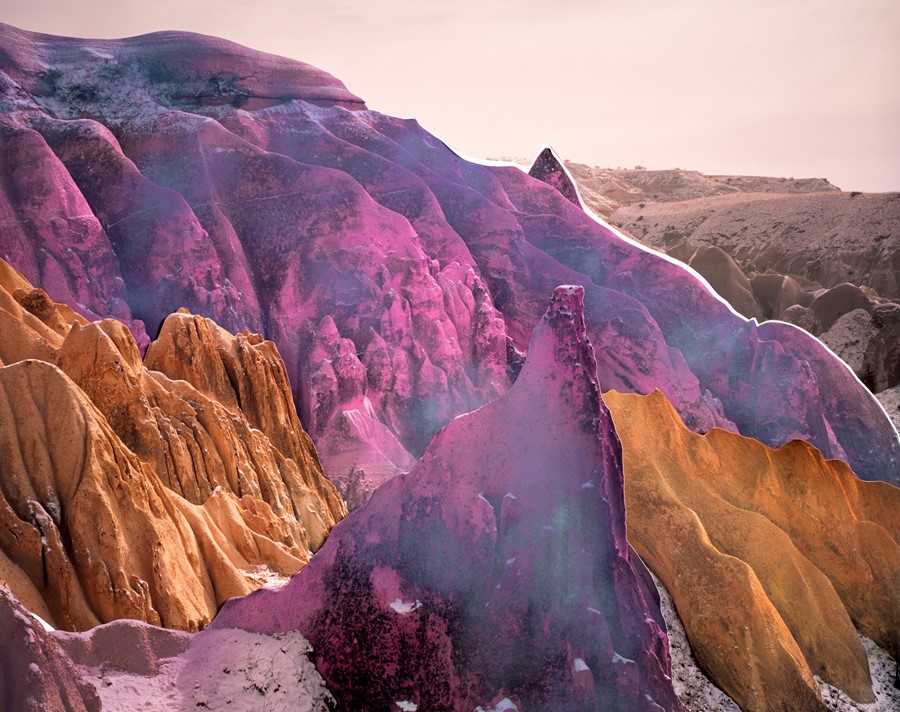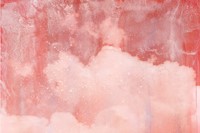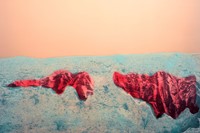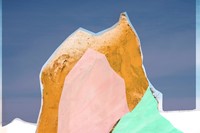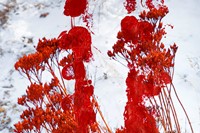Photographer Douglas Mandry shares some of the references and processes behind his captivating work
For Douglas Mandry, the individual components of a photograph – “chemicals, pixels, time, space and of course, always, a subject” – are as important as what the final image represents. The Swiss photographer’s experimental practice sees him use and manipulate these elements, in a combination of digital and analogue processes. “I believe that, especially nowadays, the amount of photographs we consume has gone beyond understanding – our brain can’t even take that many pictures,” he says. “The ambivalent relationship of photography to reality isn’t really discussed anymore, but I find it important to specifically look at what a photograph is.” Mandry’s photographs, then, are aware of and referential to the very medium, and in a world saturated with images – he believes that “we are certainly closer to photography than we have ever been, but maybe so close that we don’t see the point anymore” – his invite closer inspection.
Equivalences is a new exhibition of Mandry’s work at Zürich’s Bildhalle gallery which has opened to coincide with the release of a monograph of the same name. A number of Mandry’s series are on show alongside each other in the show, forming a dialogue between his various techniques and processes – though this cohesiveness took time to reveal itself. “Building up the layout of the exhibition was quite an intense process, since there are a lot of different formats and techniques – collages, silver gelatin prints, lithographs, UV Prints, et cetera,” Mandry explains. “But finally the pictures started to contrast and respond to each other, although they might be essentially opposed in terms of status – I like to generate time shifts by juxtaposing techniques that come sometimes from the 19th century with contemporary industrial processes.”
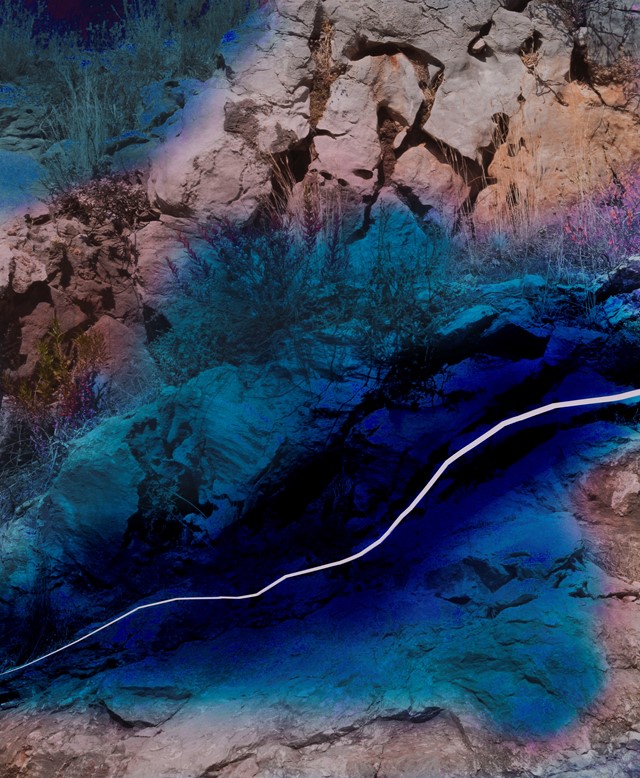
It’s in the series Unseen Sights that these 19th-century methods come into play. Comprising mesmeric colour-blocked and collaged landscapes, the images propose slightly distorted views of Turkey’s Kapadokya region. Mandry had taken the original photographs a few years before, and was inspired to rework the prints after discovering some black and white postcards dating from that period in the Middle East, which had been painted over in colour. “The postcards were meant to promote a certain region in order to encourage tourism,” he says. “I was stunned because you could find many similar images that were painted by different people and in different ways.” The handmade, “very naive but also very beautiful” way in which the postcards had been manipulated appealed to Mandry, and his own surreal, almost psychedelic Turkish scenes were the result of this intrigue. “[Kapadokya]’s landscape is known for being specific to the area, but also seemed to me very outward. I started to do large prints with them and basically paint them according to a free-inspired colour palette, a distorted memory of the place. The process evolved to finally cut, paste, paint, spray in a very physical way.”
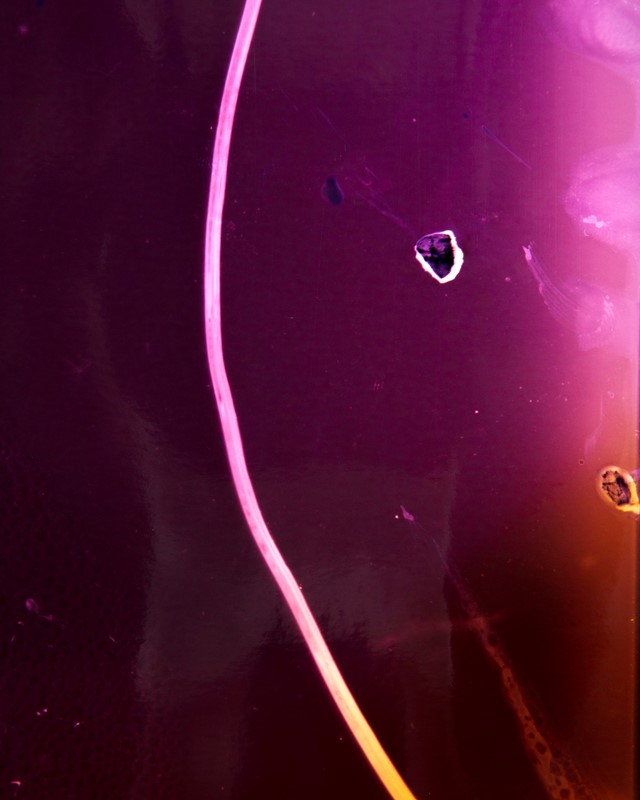
Representations of nature – rooted in “the way mankind consumes it, through photography but also through tourism” – recur throughout Mandry’s oeuvre. The series Monuments, for example, is an exploration of climate change. “I have been doing research for a long time around the phenomenon of glaciers disappearing,” he says. “The study of nature is conveying several concepts that drive me, like technological acceleration and the way mankind tries to handle its own progress.” The subject here is glaciers – specifically ice that exists underneath ‘glacier blankets’, geotextile coverings designed to slow down the rapid melting process, in Switzerland – and the series is made up of both “ice photograms”, created by replacing a negative with ice in the development process, and found images of glaciers the photographer reprinted onto geotextiles.
Mandry’s signature innovation comes into play here – though an actual camera does not. “For the ice photograms, I wanted to reduce the technical tools to the essentials: light, ice and time, exposed on photosensitive surface,” he says. In this way, the process behind Monuments becomes a comment on climate change, and how we continue to attempt to control it. “It is basically a condensed version of the whole process of glaciers disappearing, since the ice melts in only a few minutes in the heat of the lab. It’s this movement that I try to capture.” The result is a complex, abstracted look at climate change, and a series of works that seem to evade time. “The past has been photographed,” Mandry states, “but what about the future?”
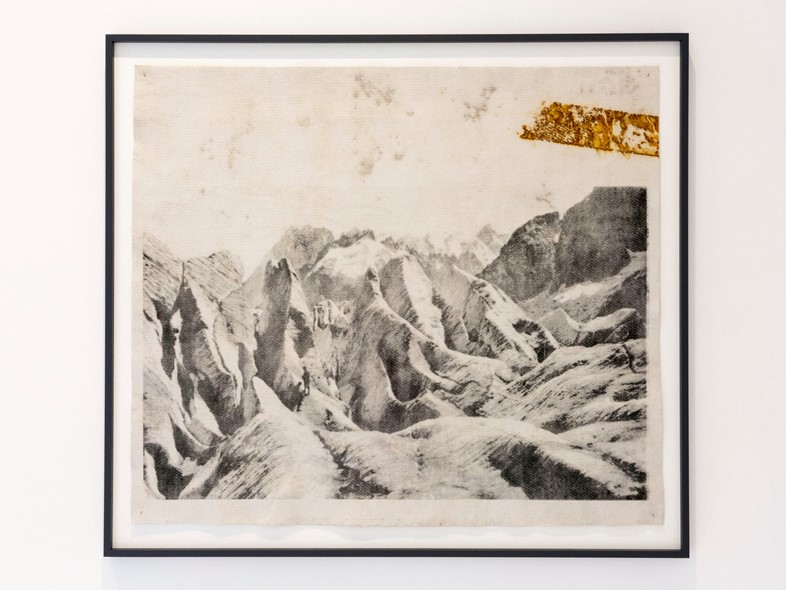
Douglas Mandry: Equivalences is at Bildhalle, Zürich, until November 15, 2018. The book of the same name is published by RVB Books.
